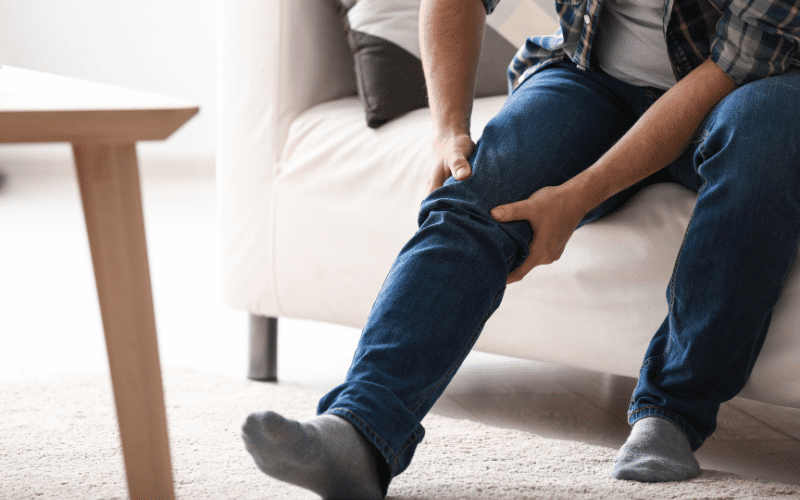2. Joint Pain and Stiffness: The Intersection of Paget’s Disease and Arthritis

For many people, the experience of Paget’s disease isn’t limited to bone pain alone. A significant number of patients also report joint pain and stiffness, adding another layer to the complex tapestry of this condition.
Joint pain in Paget’s disease arises as a consequence of the altered bone structure. The deformed bone can increase pressure on adjacent joints, leading to wear and tear. This is quite similar to the process seen in osteoarthritis, a condition characterized by the degeneration of joint cartilage and underlying bone.
The joint discomfort can range from mild stiffness to debilitating pain, impacting mobility and flexibility. Often, it affects the knees and hips, largely due to the common involvement of the long bones and pelvis in Paget’s disease.
Joint pain’s association with Paget’s disease emphasizes its effect on joints adjacent to the affected bone. To better understand, let’s dive into the interplay between bone and joint health.
Bones don’t exist in isolation – they interact with each other at joints, where they connect. Healthy, normal-shaped bones ensure smooth joint function. But in Paget’s disease, the deformed bones can cause undue stress on these joints.
When the shape and structure of the bone changes, it can affect the way it interacts with the joint. This can lead to a condition known as secondary osteoarthritis.
Here, the altered bone shape causes uneven pressure distribution at the joint, resulting in the cartilage’s gradual breakdown – the protective layer that ensures bones can glide over each other smoothly.
With the cartilage worn down, the bones at the joint rub against each other, causing pain, stiffness, and reduced joint mobility. The areas most commonly affected are weight-bearing joints, such as the hips and knees. This is because these joints are subject to more pressure, and any abnormalities in the bone structure can amplify the wear and tear they experience.
Remember, joint pain is not exclusive to Paget’s disease and can arise due to several other conditions, including rheumatoid arthritis, gout, and lupus. Thus, it’s essential to get a thorough checkup to identify the underlying cause of the discomfort. (2)